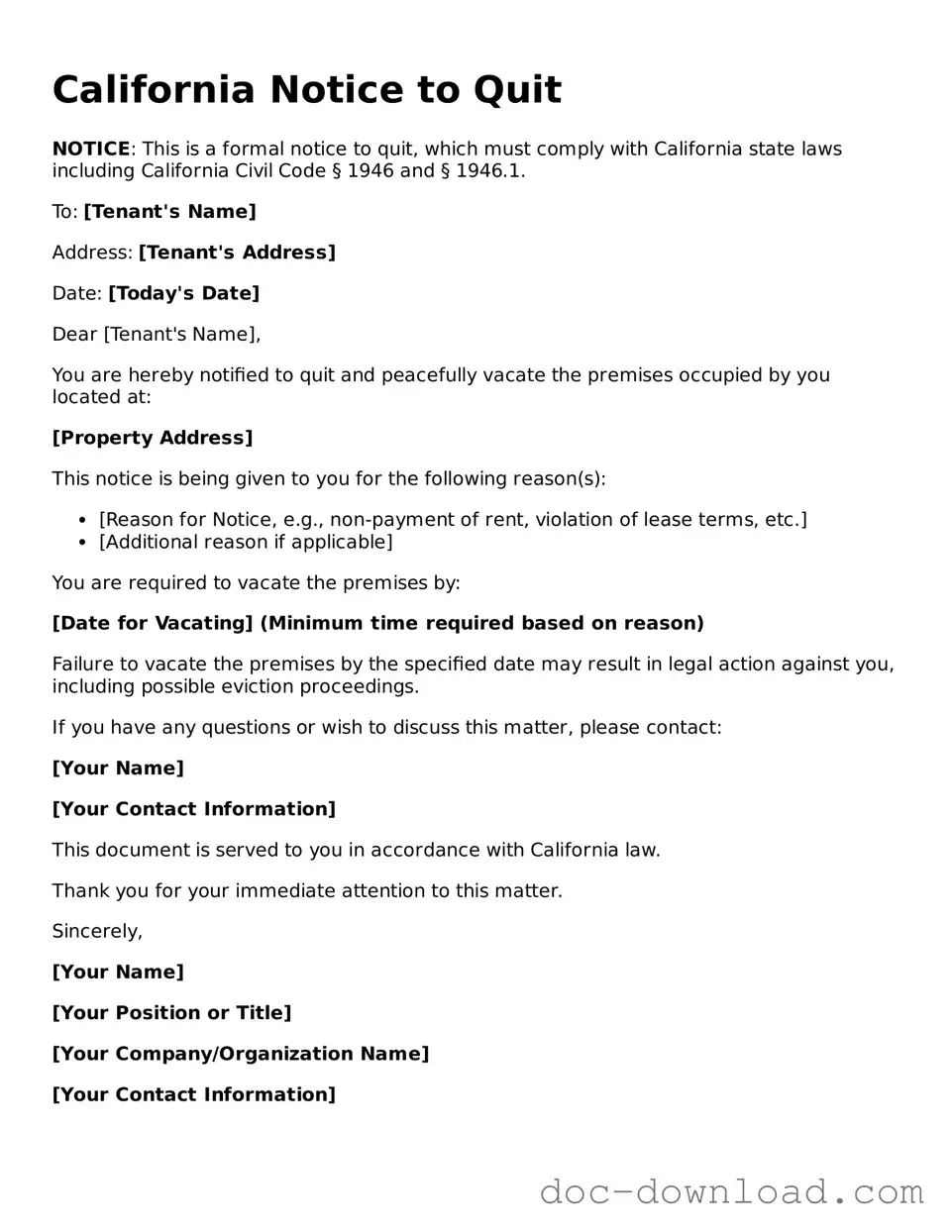The California Notice to Pay Rent or Quit is a document landlords use when tenants fail to pay rent on time. This notice informs the tenant of their overdue rent and gives them a specific timeframe to either pay the owed amount or vacate the property. Like the Notice to Quit, it serves as a formal warning and sets clear expectations for the tenant's actions moving forward.
The California Notice of Default is another document with a similar purpose. It is typically used in the context of mortgage agreements. When a borrower fails to make timely payments, the lender issues a Notice of Default, indicating that the borrower is in breach of the loan agreement. This notice is crucial as it outlines the steps the borrower must take to remedy the situation, paralleling the Notice to Quit's role in rental agreements.
The Eviction Notice, often referred to as a Summons and Complaint, is also akin to the Notice to Quit. This document is filed in court when a landlord seeks to formally evict a tenant. It outlines the reasons for eviction and provides a timeline for the tenant to respond. Both documents serve as critical steps in the eviction process, ensuring that tenants are informed of their rights and obligations.
The California Three-Day Notice to Cure or Quit is another similar document. This notice is used when a tenant violates a lease agreement, other than non-payment of rent. It gives the tenant three days to correct the violation or face eviction. Like the Notice to Quit, it emphasizes the importance of compliance with lease terms and provides a clear course of action for both parties.
The California 60-Day Notice to Terminate Tenancy is a document used when a landlord wishes to end a month-to-month rental agreement. This notice requires a 60-day period for the tenant to vacate the premises. Similar to the Notice to Quit, it serves as an official communication that outlines the landlord's intent and the tenant's obligations regarding moving out.
The California 30-Day Notice to Terminate Tenancy is closely related as well. It is typically used for month-to-month tenancies where the landlord or tenant wishes to end the rental agreement with a shorter notice period. This document, like the Notice to Quit, ensures that both parties are aware of the timeline and requirements for vacating the property.
To properly establish the framework of your business, utilize a thoughtfully designed Operating Agreement document, ensuring all members are aware of their responsibilities and the rules governing the LLC. For access to a user-friendly template, explore this easy-to-use Operating Agreement form.
The California Notice of Rent Increase is another document that shares similarities with the Notice to Quit. When a landlord decides to raise the rent, they must notify the tenant in writing, often with a 30-day or 60-day notice period, depending on the amount of increase. This document serves to inform tenants of their new financial obligations and, like the Notice to Quit, establishes a timeline for compliance.
The California Lease Termination Agreement is also relevant in this context. This document is created when both the landlord and tenant mutually agree to terminate the lease before its official end date. It outlines the terms of the termination and ensures that both parties are on the same page, similar to how the Notice to Quit communicates the landlord's intent to end the tenancy.
Finally, the California Habitability Notice serves as a reminder to landlords about their obligations to maintain rental properties. If a tenant encounters significant issues, such as lack of heat or plumbing problems, they can issue this notice to inform the landlord of the needed repairs. While this document does not directly lead to eviction, it shares the same goal of ensuring compliance with housing standards, much like the Notice to Quit ensures compliance with lease terms.
